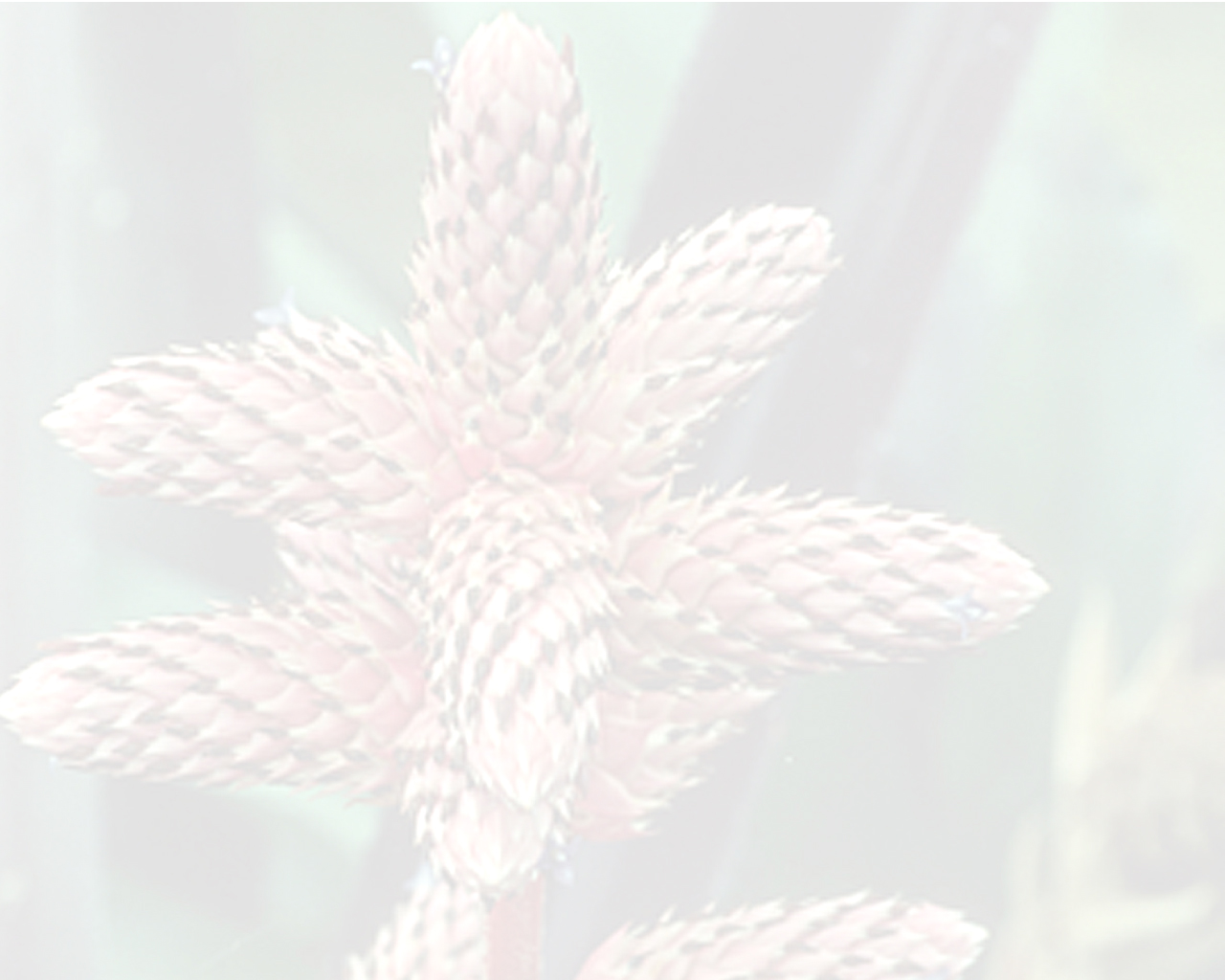

 Hohenbergia rohan-estyi Proctor, Aguirre-Santoro & K.Campbell[as Hohenbergia rohanestyi ]
Hohenbergia rohan-estyi Proctor, Aguirre-Santoro & K.Campbell[as Hohenbergia rohanestyi ]Diagnose: —Hohenbergia rohan-estyi differs from the very similar H. negrilensis by its much longer stipes (19–39 mm vs. 2–8 mm long) and less numerous flowers per spike (18 to 35 vs. 50 to 60 flowers per spike). Hohenbergia rohan-estyi also resembles H. caymanensis and H. laesslei but mainly differs from them because of its more numerous flowers per spike (18 to 35 vs. 12 to 18 flowers per spike). Observations: —Hohenbergia rohan-estyi is similar to H. caymanensis Britton ex Smith (1935: 150), H. laesslei Smith (1956: 52) and H. negrilensis Britton ex Smith (1935: 151) because of its sublax branches of the inflorescence that fully expose the inflorescence axis; basal primary bracts much longer than the branches; acuminate to broadly acute and long-mucronate floral bracts; and long-mucronate sepals. It can be easily separated from H. negrilensis by its much longer stipes (19–39 mm vs. 2–8 mm long) and less numerous flowers per spike (18 to 35 vs. 50 to 60 flowers per spike). Hohenbergia rohan-estyi mainly differs from H. caymanensis by its longer stipes (19–39 vs. 6–18 mm long), white corollas (vs. green), and longer and broader petals (11.2 × 3 mm vs. 8–9.5 × 1.2 mm).
Hohenbergia rohan-estyi differs from H. laesslei by its medial bracts of the peduncle longer than the internodes (vs. shorter), shorter stipes (19–39 mm vs. 40–42 mm long), more numerous flowers per spike (18 to 35 vs. 12 to 18 flowers per spike), and narrower floral bracts (3.6–6.5 mm vs. 7–9.8 mm wide). Finally, the other two species of Hohenbergia endemic to the Dolphin Head Mountains, H. brittoniana and H distans, can hardly be mistaken with H. rohan-estyi because of their unusually long stipes of the spike and short-mucronate floral bracts. In addition to the diagnostic morphological characteristics that separate Hohenbergia rohan-estyi from H. caymanensis, H. laesslei and H. negrilensis, its geographic distribution does not overlap with any of them. First, H. caymanensis only occurs in Grand Cayman and Providencia Island in Colombia. Second, H. laesslei is endemic to the central region of the Cockpit Country of Jamaica. Lastly, as well as H. rohan-estyi, H. negrilensis is endemic to western Jamaica; however, the latter does not occur in the Dolphin Head Mountains and it is commonly found near coastal areas at lower elevations.Edited from (29-03-2017): Aguirre-Santoro et al. 2016. (protologue) A new species of Hohenbergia (Bromeliaceae) endemic to the Dolphin Head Mountains in western Jamaica .